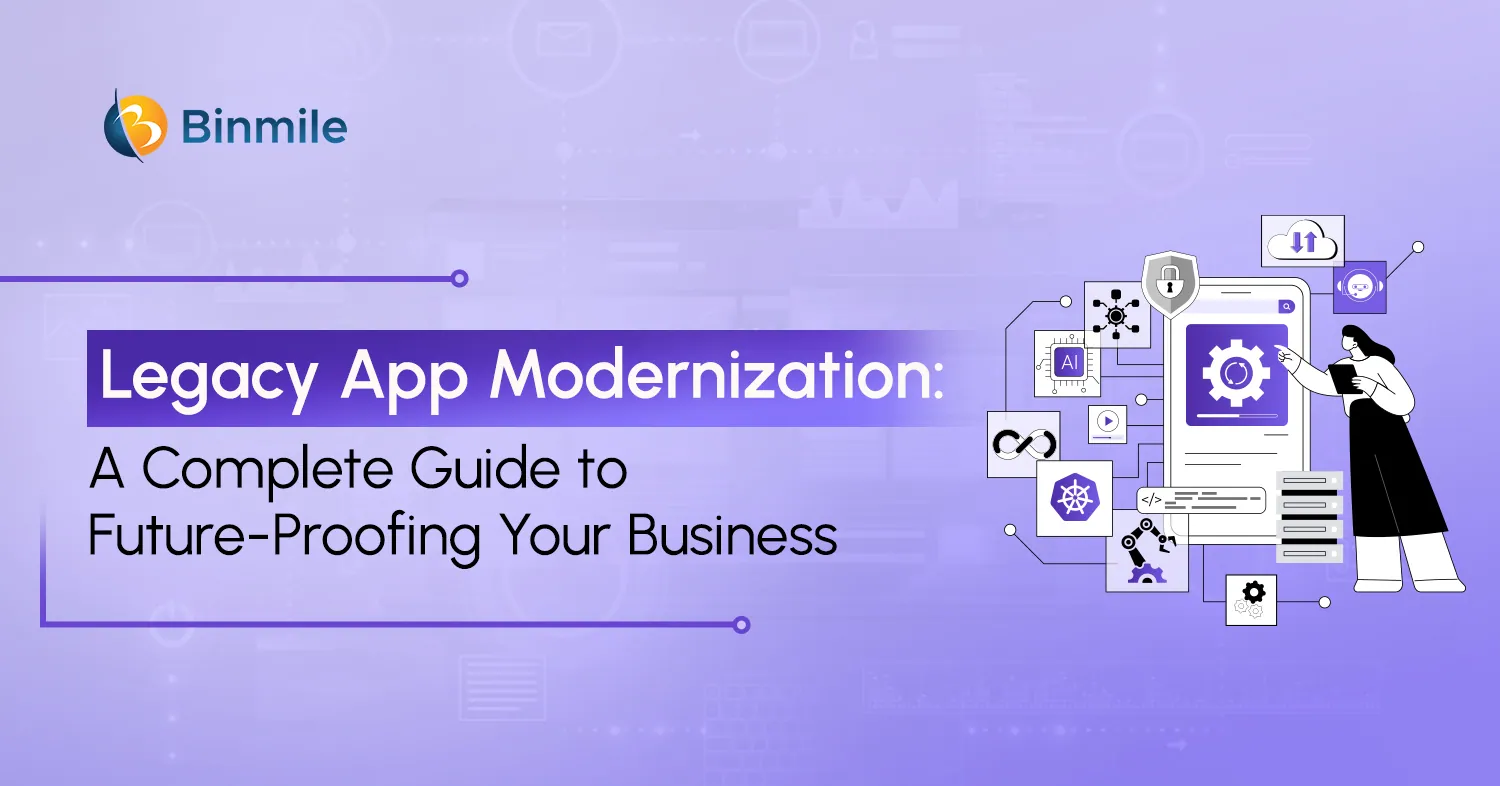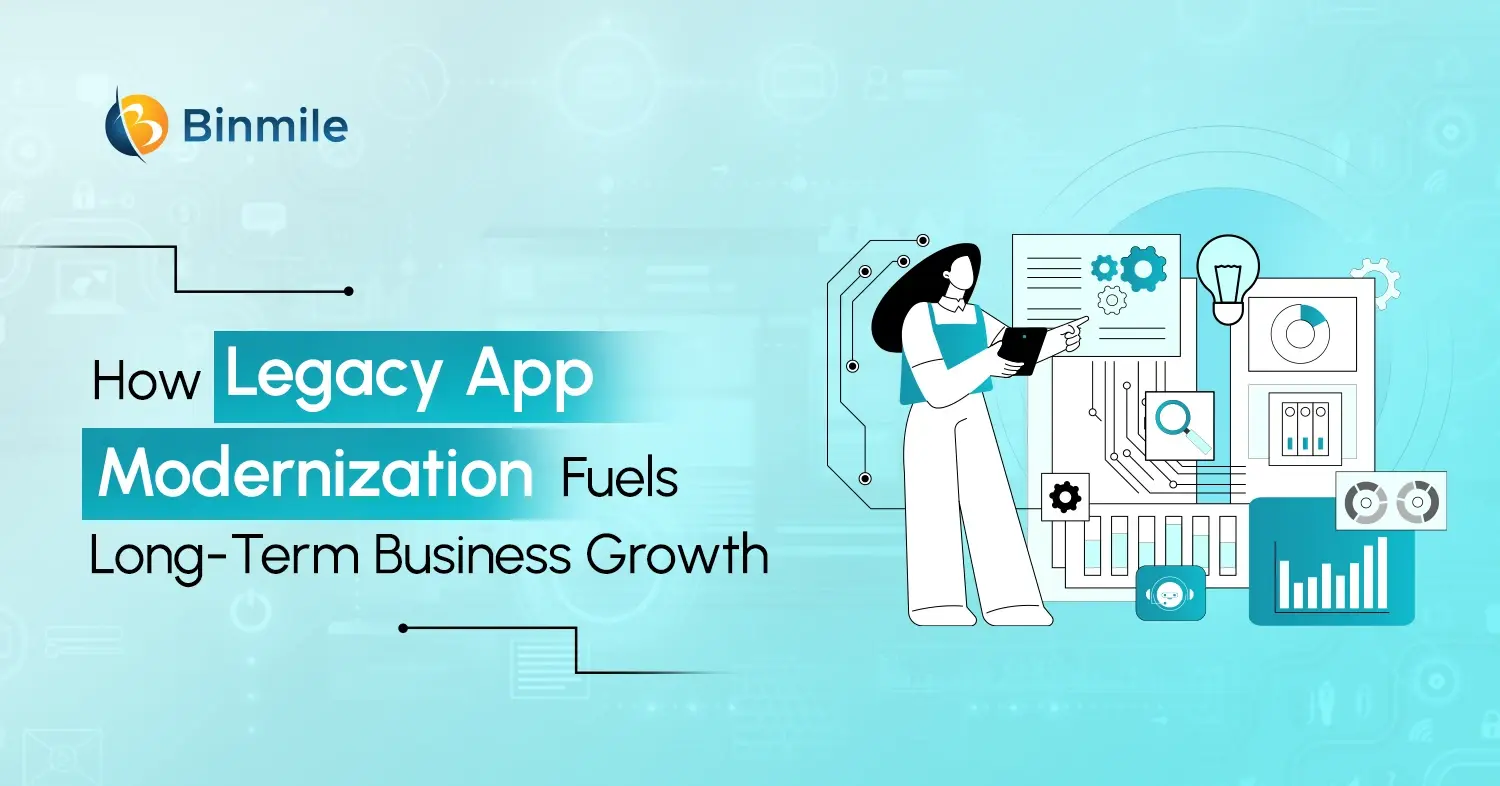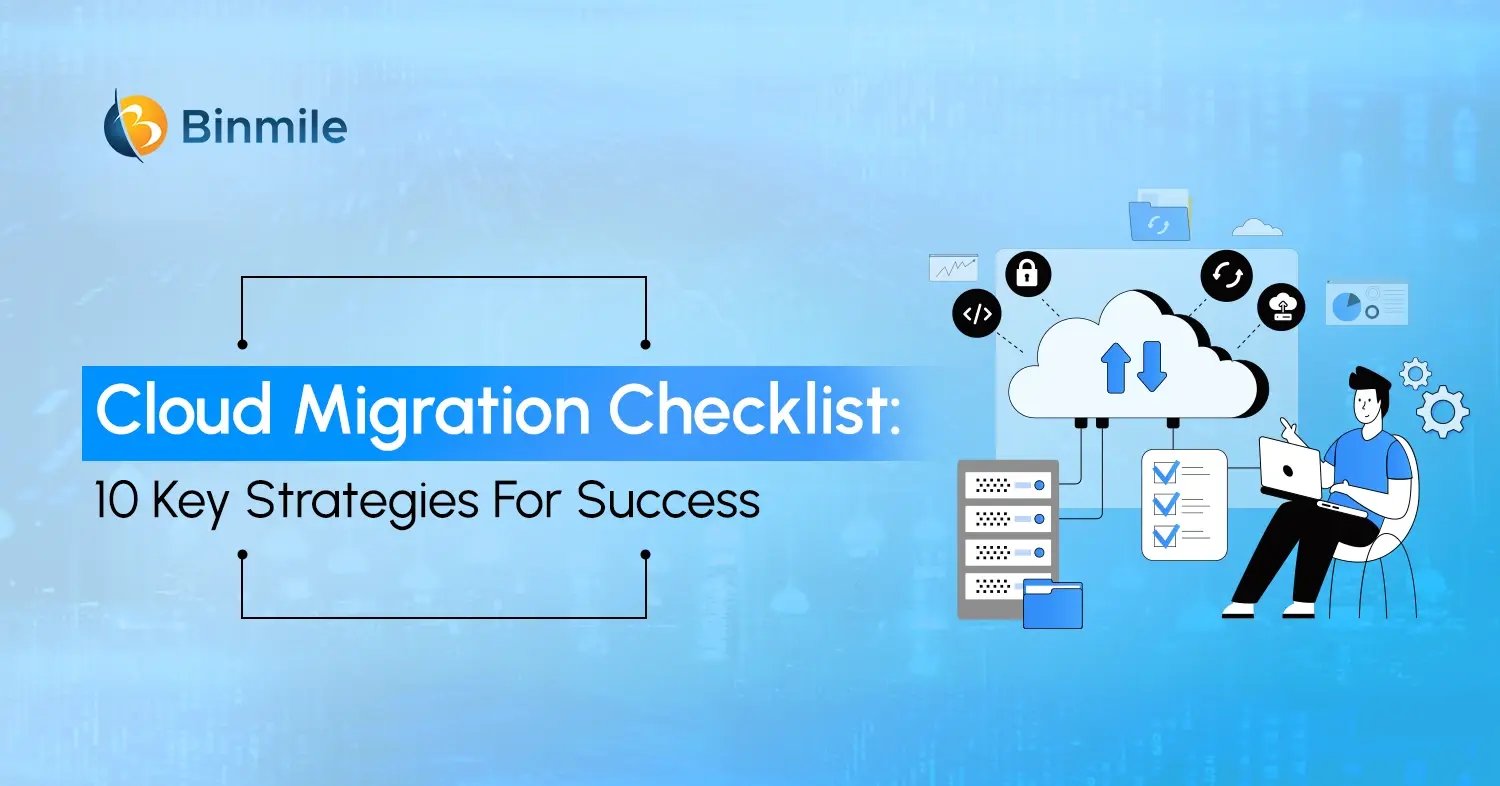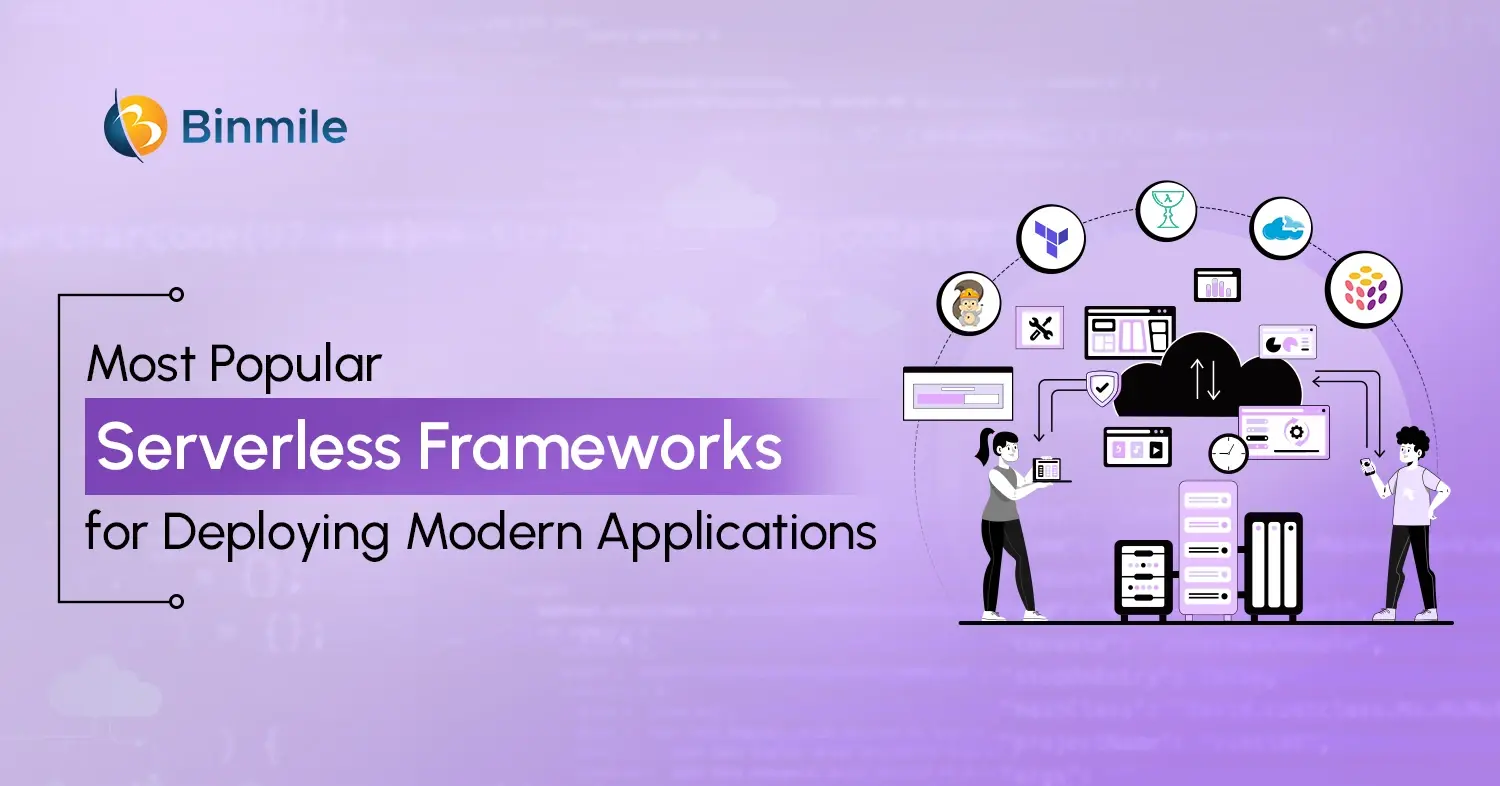- app modernization for business
- application modernization services
- Legacy App modernization techniques
- legacy application modernization
- legacy application modernization services
- legacy modernization services
- necessity of app modernization for enterprise
- successful app modernization secrets
- technologies for app modernization
- tools for app modernization
- what failed app modernization projects
- what is enterprise app modernization
Legacy app modernization simply means a practice of ensuring compatibility of your obsolete or aging software with modern tech-specific requirements, like contemporary frameworks, infrastructure platforms, newer languages, etc. Also called legacy system modernization, it involves modernizing the core competency of your monolithic, on-premises applications, in terms of internal architecture, platform infrastructure, and functionalities. It also comprises cloud application modernization, at which organizations move their core IT functions to secure Cloud-hosted environments.
Why is Legacy App Modernization Essential for Enterprises?
Legacy app modernization is extremely important for enterprises in today’s data-driven times of new emerging technologies. Legacy app modernization enables your business to justify its ROI and upgrade its software portfolio so that it can leverage modern infrastructure, tools, and advancements being made in the technologies. Moreover, a well-modernized infrastructure saves costs on resources to run an application and enhances the frequency and reliability of deployment. In addition, it brings forth improved uptime and resiliency, among other benefits. In a nutshell, a well-implemented app modernization strategy in your business means its complete digital transformation at par with global standards of performance and quality excellence.
Essential Technologies and Tools Involved in Legacy App Modernization
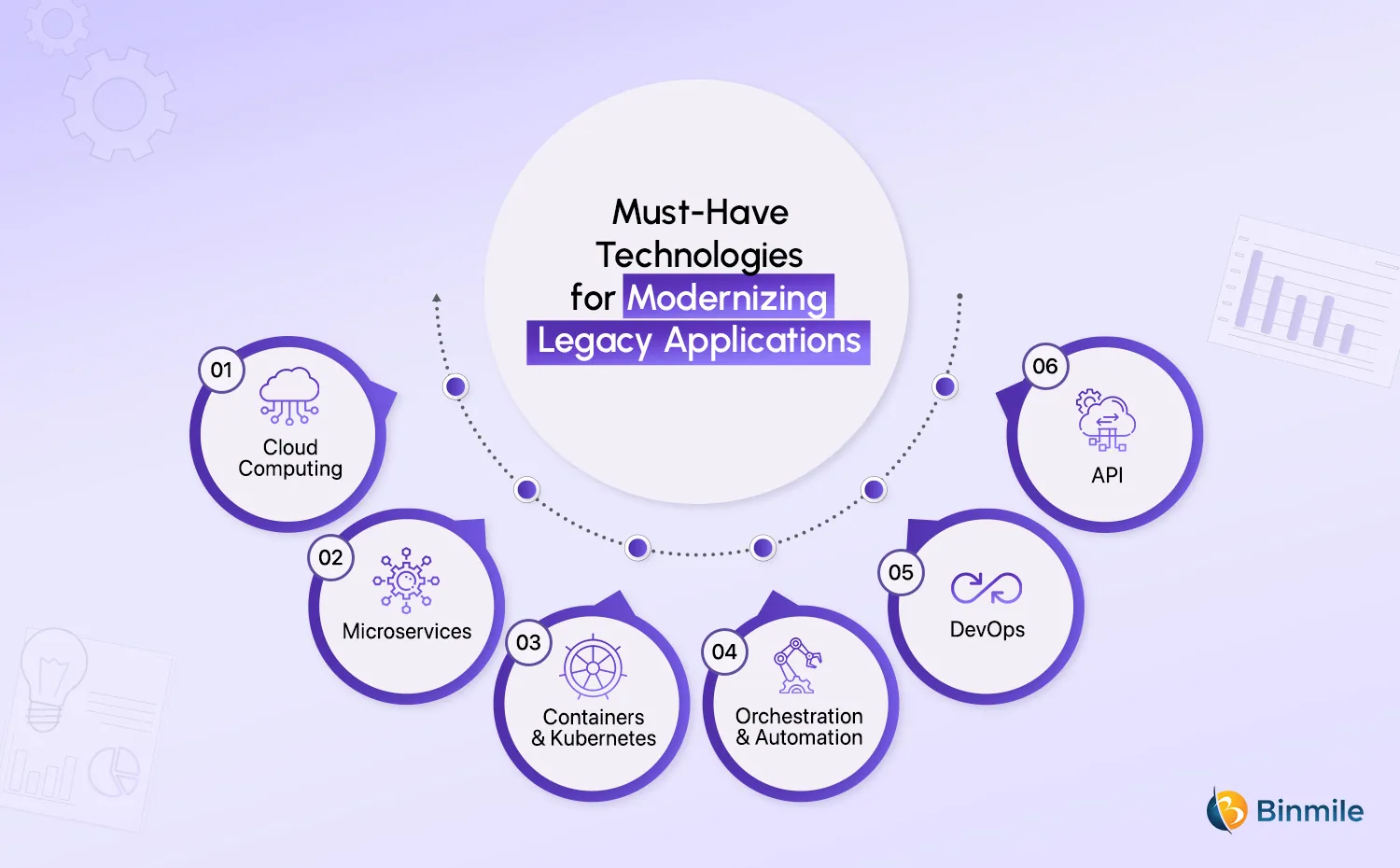
1. Cloud Computing
An essential part of app modernization is the Cloud migration business tactic to run business functions and operations efficiently in secure Cloud environments. That’s Cloud computing, enabling scalability, agility, and lower cost for your business. It does so through a broad range of alternatives, like private cloud, public cloud, hybrid cloud, and multi-cloud.
2. Microservices
The Microservices approach helps in the attainment of agility for organizations so that they can handle customer and employee expectations well. With robust component separation and smaller code bases, Microservices ensure high maintainability. As a result, adopting effective app modernization appears to be an essential choice for enterprises.
3. Containers and Kubernetes
Developers use these technologies to build scalable apps that can adapt to various settings to run smoothly. Containers, to be precise, act as a cloud-specific method that handles application packaging, deployment, and operations. In addition, the role of Kubernetes is to manage containers and automate operational tasks, like app deployment, scaling, and management.
4. Orchestration and Automation
Orchestration automates operational tasks related to containers. It is mostly used for app modernization, migration, and development. Automation, on the other hand, helps ensure sustainable management of apps and so is a great help in process or workflow management.
5. DevOps
It defines collaboration between development and operations teams with a focused approach to automation and continuous delivery. In-app modernization, DevOps practices allow integration and deployment and promote Infrastructure as Code (IaC). Adopting such practices helps automate infrastructure management, and ensure automated testing and quality assurance. Moreover, it also allows your development teams to monitor and track app performance and user behavior.
6. API
An application programming interface (API) is invaluable in app modernization by bridging communication and data shareability between apps. Based on this, you can integrate your aging app with modern, Cloud-hosted systems and leverage the safe Cloud environments without having to replace your existing infrastructure.
Avoid These Costly Mistakes in Your Legacy App Modernization Project
When an app modernization project fails, the counterproductive results of the same collectively harm business. For instance, the serious repercussions of frequent downtime, system failures, wasted resources, and time are bound to happen because of the failed app modernization project. Therefore, the initiative dedicated to modernizing legacy processes is necessary for businesses. Here are some pointers exploring probable factors that lead to failure in your app modernization projects.
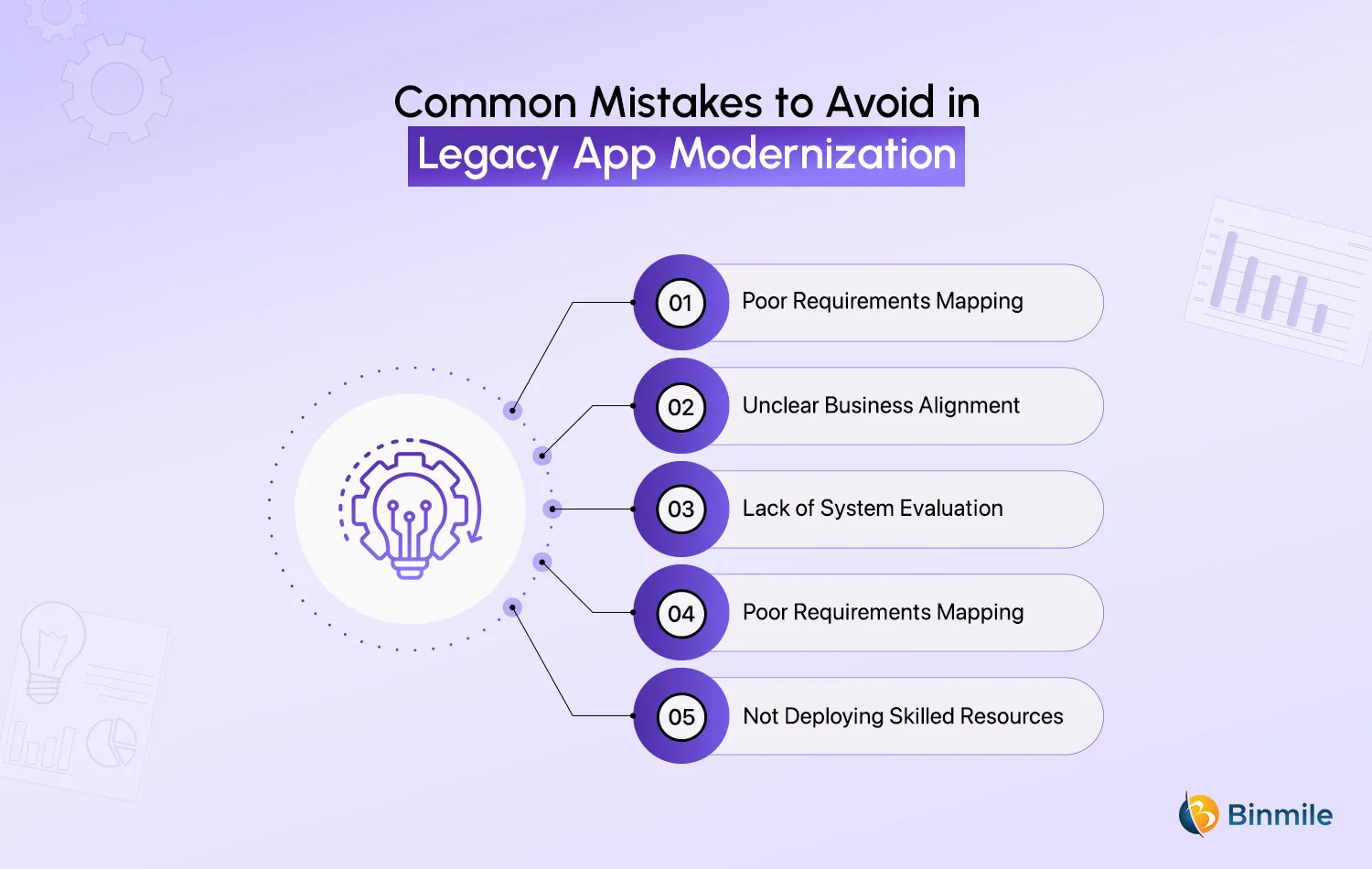
1: Poor Requirements Mapping
When the process of modernizing an app is not tied to the core purpose of what business problems it would solve, the likelihood of an app modernization project is bound to fail. Determining problems involves understanding the reason behind the slowdown of your existing business processes, such as accounting or inventory before modernizing their compatibility with new systems.
2: Unclear Business Alignment
When a new modernized system is implemented in an organization without considering its probable consequences, the entire workforce ecosystem gets affected drastically as employees have to adapt to the system faster. Instead of shepherding your employees to adapt to the implemented system, the system must adapt and be compatible to meet your current business processes and requirements.
3: Lack of System Evaluation
Most companies are under the impression that just by modernizing their legacy IT processes to the compatibility of new systems; their business will run better and gain profitable results quickly. That’s a wrong assumption. A complete revamp or modernization of your systems will destabilize your business and your workforce ecosystem. Moreover, it will be counterproductive to how customers interact with your business, putting customer engagement in harm’s way. The best approach toward app modernization is to let it happen in measurable steps.
4: Inflexible App Architecture
The way agile methodologies have paved the path for smooth and successful app modernization, not adopting this approach is one of the biggest mistakes that leads to failing an app modernization project in your business. Hence, choose an agile application over an inflexible one to make your business future-ready.
5: Not Deploying Skilled Resources
One of the most important reasons for app modernization efforts falling through is not deploying the right and skilled employees in the project, in the first place. And it mostly happens when most companies try to modernize their business processes by cutting corners. Meanwhile, it is also important to ensure that you have an adequate budget to lead the app modernization process to its successful conclusion, and whether the new solution stands compatible with your business needs.
Apart from the factors mentioned above, a misguided expectation regarding your business value also leads to the failure of your app modernization drive. For example, most companies latch on to value calculations that align with short-term cost cuts and transaction gains over long-term upshots. Ideally, it should focus on transforming the whole digital backbone to keep the business up and running efficiently far into the future.
Start your app modernization journey today with expert support to boost efficiency and achieve measurable business outcomes.
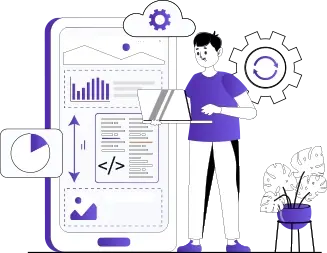
Secrets to a Successful App Modernization Journey: Key Things to Follow
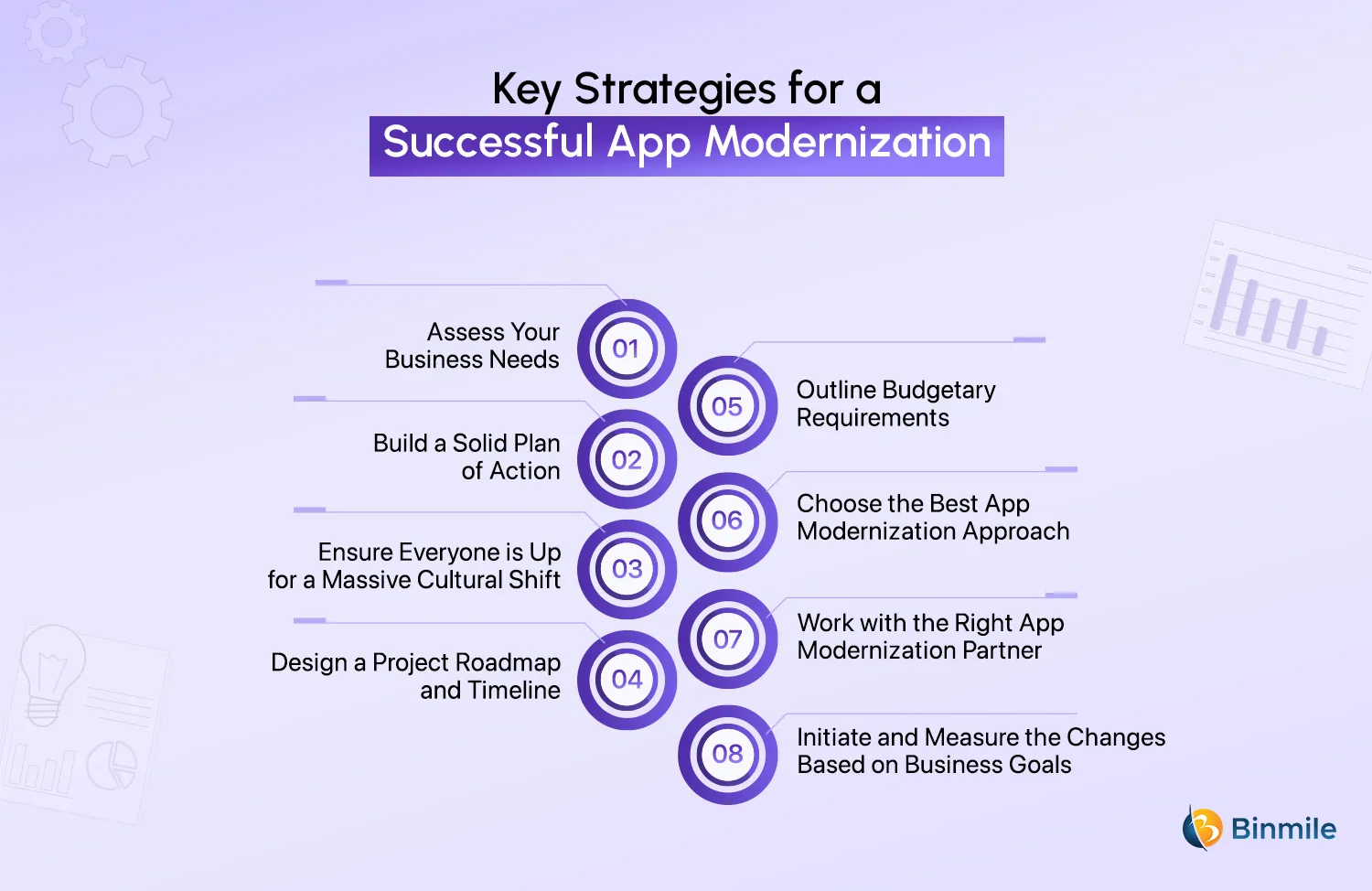
1. Assess Your Business Needs
Ensure you are aware of the current state of your business, the goals to achieve, and how to drive transformative results without disruption. Then assess your current systems and workforce so that you can base your understanding of both to lay the groundwork for your business needs and application landscape.
2. Build a Solid Plan of Action
Use your understanding of your business needs and challenges to build a solid plan of action. This doesn’t just mean achieving a general desire for improvement in your existing business process. It means channeling your understanding into the specific technical goals to be accomplished through app modernization. In this step, you can also consider the right Cloud vendor to provide meaningful results to your app modernization drive.
3. Ensure Everyone is Up for a Massive Cultural Shift
In this step; ensure that your employees are ready to accept the necessity of app modernization and the costs it involves. It is very necessary, considering most employees like to work with specific technologies and tools. The abrupt shift to new systems and workflows would confuse them, thus affecting their sense of security and stability.
4. Design a Project Roadmap and Timeline
Design a project roadmap and timeline in a way that adds value to your app modernization journey without adversely affecting your existing operations. It requires your proper understanding of your legacy systems, in terms of architectural limitations, operational risks and constraints, etc. You can also consider involving a third party providing cloud consulting services to have clarity on internal processes and dependencies during the app modernization journey.
5. Outline Budgetary Requirements
Determine the budget necessary for financing your app modernization initiative. The extent of financing for app modernization depends on how extensively a business relies on monolithic or legacy applications. Also, don’t forget to determine the total cost of ownership (TCO) and ROI to ensure how much value the app modernization project will deliver to your business.
6. Choose the Best App Modernization Approach
QA for app modernization initiatives varies based on the implementation case, possible impacts, and risks involved. Choose the one in conformity with your business needs. Options, in this context, are:
- Rehost: Defines migration of on-premise processes to a new physical, virtual, or Cloud environment.
- Refactor: Defines restructuring or changing the source code of an app without changing its core functionality. It improves code’s properties, in terms of readability, extensibility, etc.
- Re-architect: Defines redesigning/rewriting an app’s architecture from scratch. it helps to shift the app to a new architecture featuring more capabilities.
- Rebuild: It involves structuring an app’s various components from the ground up to the compatibility of operational needs.
- Replace: It involves a complete assessment of your legacy systems and replacing them with the right solutions. Choose this option when existing systems no longer work or are hopeless to revive.
7. Work with the Right App Modernization Partner
No doubt, modernizing legacy applications as an initiative is lengthy, expensive, and volatile. Therefore, it makes sense to work with the right partner offering application modernization services. It plays a crucial role in supporting your app modernization drive. For example, you receive skilled resources; reduce the chaos, and lead the initiative towards desired results.
8. Initiate and Measure the Changes Based on Business Goals
Execute app modernization project by ensuring it is monitored to measure changes. The changes aim to improve the performance of the business through new systems. The goal here is to prevent the possibility of today’s modernized app from becoming a legacy again in the future.
Future-proof your IT landscape with tailored modernization strategies designed by industry experts for long-term success and adaptability.
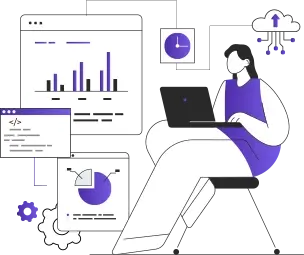
Conclusion
App modernization stands for revamping or digital transformation of your existing digital products, be it internal tool or website/app. The goal is to ensure the compatibility of your legacy system workflow with solutions designed using modern technologies. A methodological implementation of modern technological systems serves an organization in long-term profitable growth. However, developing an app is expensive, time-consuming, and arduous. The steps mentioned above would give you insights into initializing your app modernization drive successfully.
If you seek a reliable software development company to help you lead an application modernization drive to its successful outcome, consider Binmile. We are experienced, qualified IT specialists to modernize legacy applications with precision. Therefore, our approach helps your business to grow boundlessly amidst emerging technologies.
Frequently Asked Questions
Legacy Application Modernization refers to the process of updating and enhancing older software systems to align with current technology standards, improve functionality, and address evolving business needs.
The process typically includes assessment, planning, choosing a modernization strategy (rehosting, re-platforming, refactoring, or rebuilding), implementation, testing, and ongoing maintenance. Each step is critical for a successful modernization effort.
These tools provide features such as code analysis to identify outdated components, automated refactoring to improve code structure, migration scripts for seamless data transfer, and integration with development pipelines for efficient deployment.
